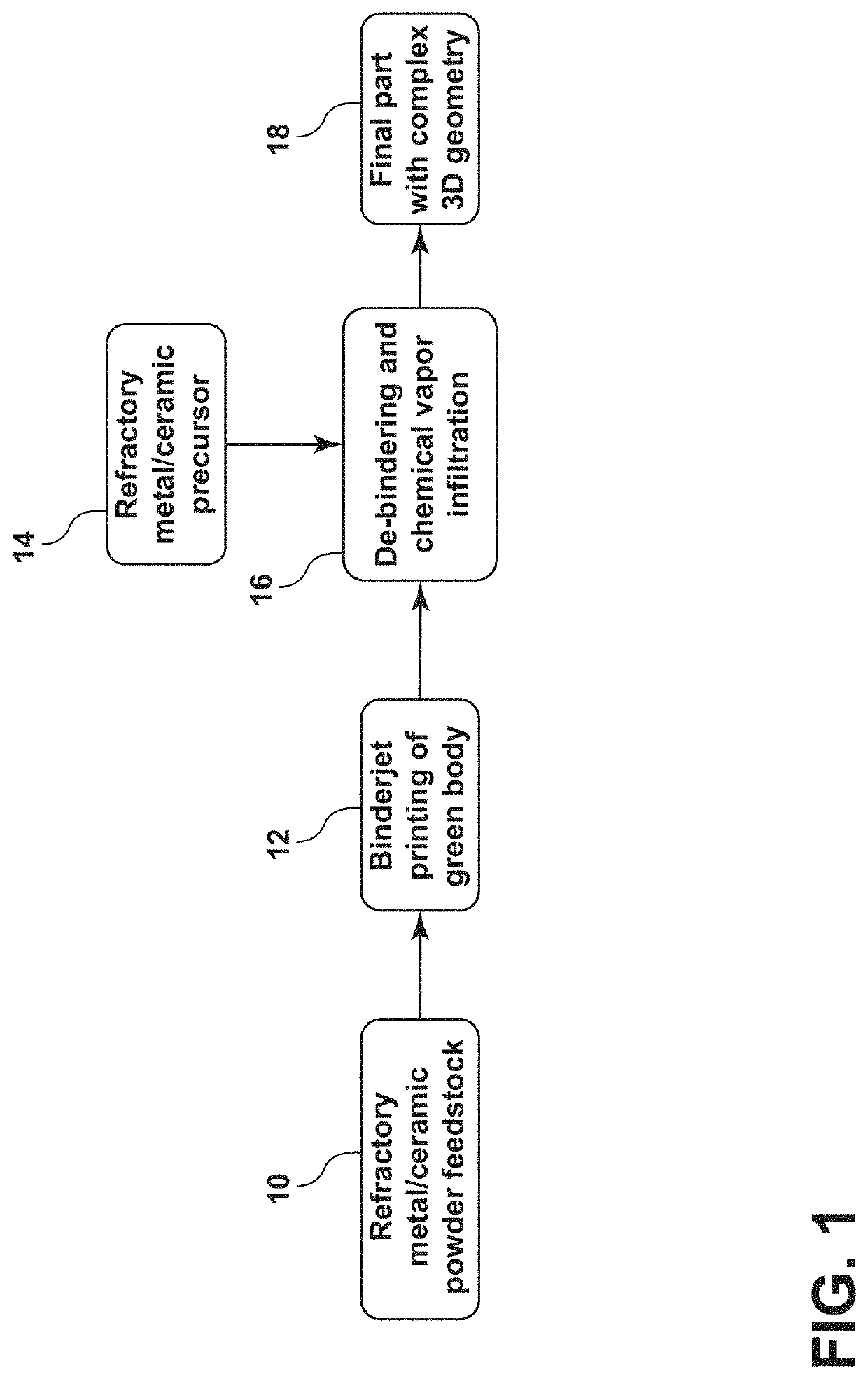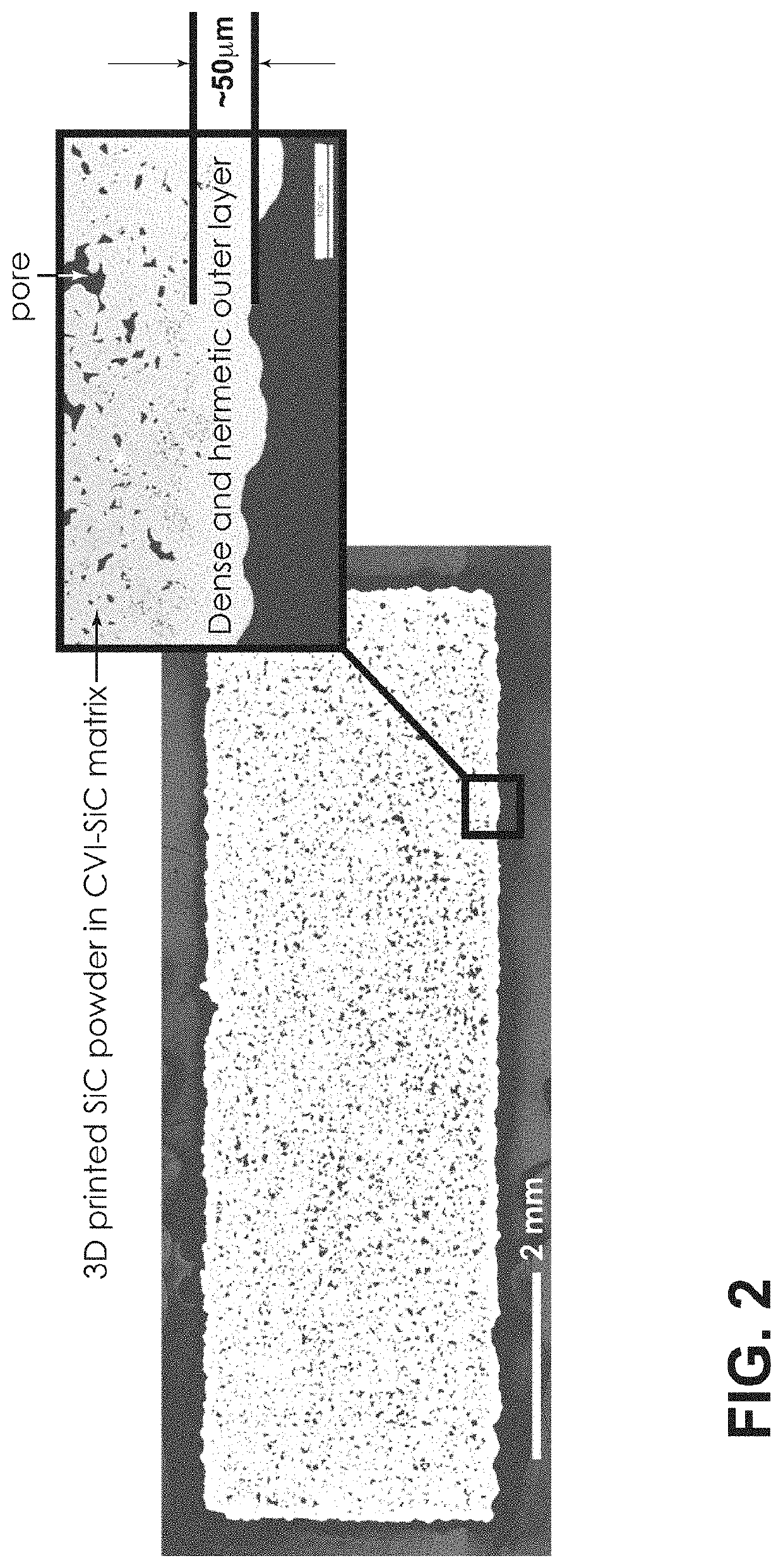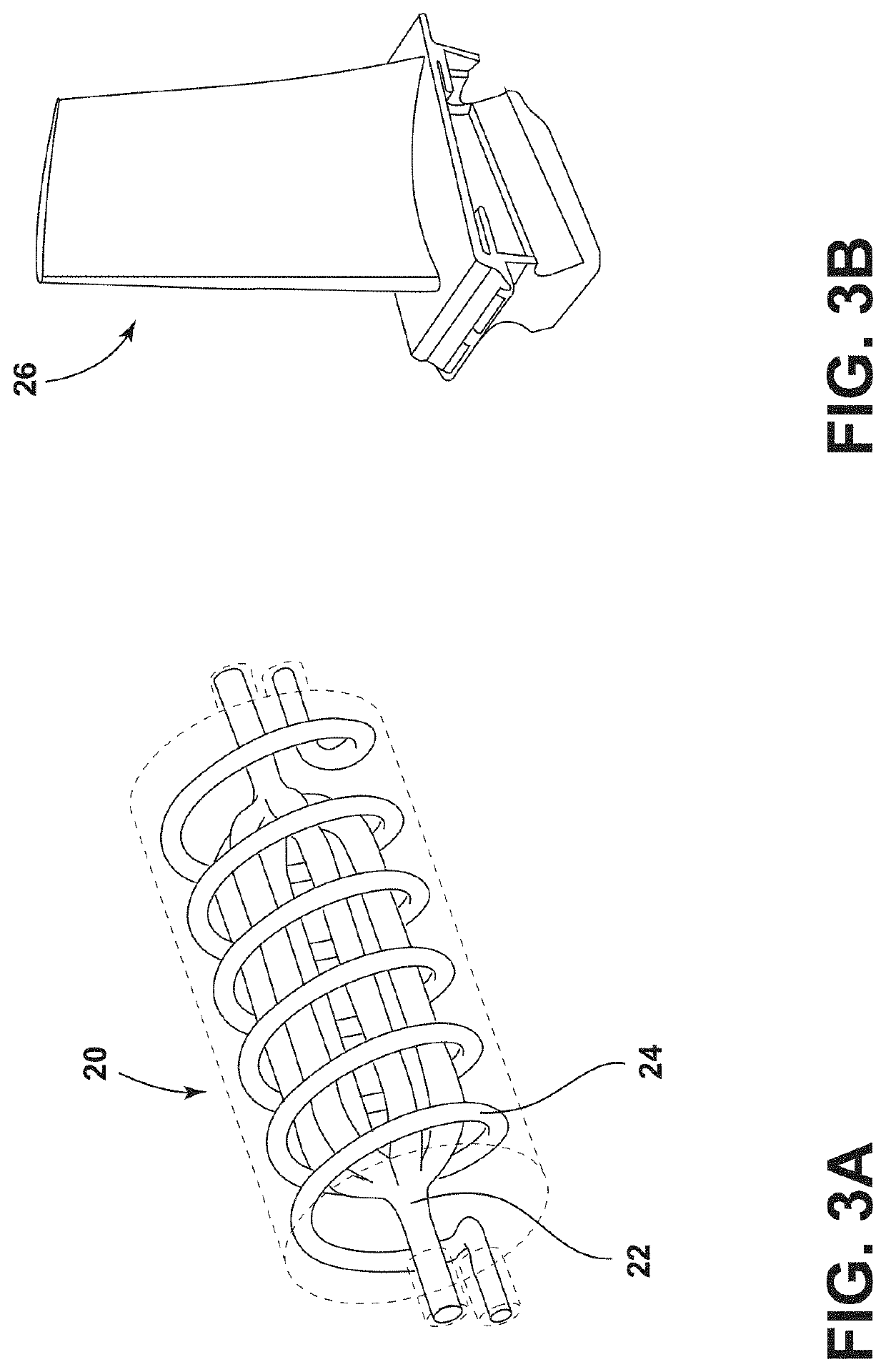Additive manufacturing of complex objects using refractory matrix materials
a technology of refractory matrix materials and additive manufacturing, which is applied in the direction of nuclear elements, machines/engines, nuclear engineering, etc., can solve the problems of inability to readily produce components of higher complexity, such as heat exchangers, flanges, turbines,
- Summary
- Abstract
- Description
- Claims
- Application Information
AI Technical Summary
Benefits of technology
Problems solved by technology
Method used
Image
Examples
Embodiment Construction
[0022]As discussed herein, the current embodiments generally relate to a method for the manufacture of a wide-variety of object using a refractory matrix material. The method includes the additive manufacture of a green body from a powder-based refractory matrix material followed by densification via CVI. The method of manufacture is generally discussed in Part I below, followed by a description of an integral nuclear fuel element formed according to this method in Part II below. Though described in connection with a nuclear fuel element, the present method is applicable in effectively any application in which a complex three-dimensional object requires high heat resistance, including heat exchangers, flanges, and turbines blades for example. Similarly, just as nuclear fuel may be embedded inside the refractory matrix, other constitutes and devices may be incorporated into the matrix.
I. Method of Manufacture
[0023]A method according to one embodiment includes the manufacture of a thr...
PUM
| Property | Measurement | Unit |
|---|---|---|
| temperature | aaaaa | aaaaa |
| temperature | aaaaa | aaaaa |
| thickness | aaaaa | aaaaa |
Abstract
Description
Claims
Application Information
 Login to View More
Login to View More - R&D
- Intellectual Property
- Life Sciences
- Materials
- Tech Scout
- Unparalleled Data Quality
- Higher Quality Content
- 60% Fewer Hallucinations
Browse by: Latest US Patents, China's latest patents, Technical Efficacy Thesaurus, Application Domain, Technology Topic, Popular Technical Reports.
© 2025 PatSnap. All rights reserved.Legal|Privacy policy|Modern Slavery Act Transparency Statement|Sitemap|About US| Contact US: help@patsnap.com



